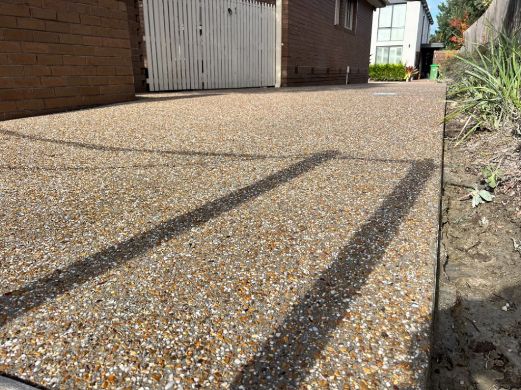Cutting expansion joints into your concrete driveway is a must since concrete expands and contracts depending on the temperature. Expansion joints allow driveways to move with these changes, preventing buckling or cracking.
Additionally, concreters design these joints to keep water out of the base material of the concrete or soil underneath. It’s a crucial step for ensuring the long-term stability of your driveway.
This post will discuss and answer the most common questions about expansion joints in concrete driveways.
Are Expansion Joints Needed in Concrete Driveways?
Yes, expansion joints are necessary for concrete driveways. Even though they’re generally recommended for driveways that are more than 6 metres wide, these joints ensure stability and longevity in a driveway.
They’re especially important in places that regularly experience heavy loads or traffic.
What If I Don’t Provide Expansion Joints in My Concrete Driveway?
If you don’t provide expansion joints in your concrete driveway, the structure won’t adjust to temperature changes. This results in buckling or cracking, affecting your concrete’s appearance. It could also become a safety hazard.
Neglecting to include expansion joints in concrete can lead to the failure of the slabs, resulting in costly repairs.

How Many Metres Apart Should These Expansion Joints Be?
As a general rule, expansion joints in concrete driveways should be placed every 6 – 7 metres. However, for driveways that are wider than 6 metres or are situated next to a building, it is recommended to reduce the spacing to just one joint every 3 metres.
When is the Best Time to Cut Expansion Joints in My Driveway?
It is important to cut expansion joints in a concrete driveway as soon as it has hardened enough to support the weight of the saw. This is typically around 24 to 48 hours after the concrete has been applied.
It is vital to carry out this task while the concrete is still relatively fresh, as cutting the joints too late can weaken or crack the surface.

Primary Methods of Saw Cutting for Expansion Joints
Here are the primary ways of saw cutting expansion joints on concrete:
Wet Cutting
Wet cutting is the alternative method of saw cutting for expansion joints that utilises water. The liquid serves to lubricate and cool the saw blade employed in this technique.
Dry Cutting
Dry cutting is a method of cutting expansion joints in concrete without the use of water. A concreter will instead use a dry-cutting saw to cut through the concrete.
How Deep Will Concrete Cuts Be?
The cuts in expansion joints in concrete should be at least a quarter and no more than half the thickness of the slab. This is the generally accepted standard that most concrete installation companies adhere to on concrete surfaces.
